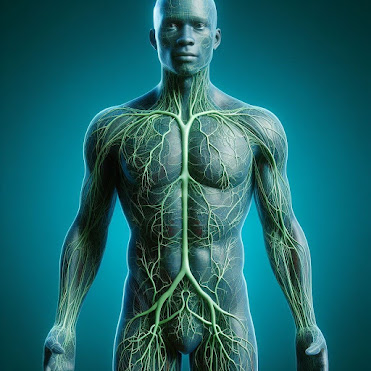The Lymphatic System Step by Step: A Comprehensive Guide
The lymphatic system is a vital part of the human body, yet it often goes unnoticed and underappreciated. This intricate network of vessels, organs, and nodes plays a crucial role in maintaining the body's overall health and well-being. In this article, we will take a step-by-step journey through the lymphatic system, exploring its functions, structure, and the importance of keeping it healthy.Step 1: Understanding the Basics
The lymphatic system is a complex network of vessels that runs parallel to the circulatory system. Its main function is to transport lymph, a clear fluid containing white blood cells, proteins, and other substances, throughout the body. Lymphatic vessels resemble blood vessels, but instead of carrying blood, they carry lymph.Step 2: The Primary Players
The lymphatic system consists of several key components. The lymphatic vessels are the highways through which lymph flows. These vessels connect to lymph nodes, which act as filters, removing harmful substances, such as bacteria and viruses, from the lymph before it returns to the bloodstream. The spleen, located in the upper left part of the abdomen, is another essential organ of the lymphatic system. It filters blood and helps fight infections. Additionally, the thymus gland, situated behind the breastbone, plays a crucial role in the development and maturation of white blood cells called T-cells, which are vital for the immune response.Step 3: The Immune System Connection
The lymphatic system and the immune system work hand in hand to protect the body against harmful substances and infections. Lymph nodes, which are scattered throughout the body, contain white blood cells called lymphocytes that help identify and destroy foreign invaders. When an infection occurs, lymphocytes multiply rapidly, leading to swollen lymph nodes.Step 4: Lymphatic Drainage
The lymphatic system also plays a vital role in maintaining fluid balance within the body. Excess fluid, waste products, and toxins are removed from tissues by the lymphatic vessels and transported back into the bloodstream. This process, known as lymphatic drainage, helps prevent edema, or swelling, and ensures the body's tissues receive necessary nutrients and oxygen.Step 5: Lymphatic Disorders
Like any other system in the body, the lymphatic system can experience dysfunction or disorders. Lymphedema is a condition characterized by swelling in the arms or legs due to a blockage or damage to the lymphatic vessels. This condition can be caused by surgery, radiation therapy, infection, or certain genetic conditions. Another common disorder is lymphoma, a type of cancer that affects the lymphocytes.Step 6: Keeping the Lymphatic System Healthy
Maintaining a healthy lymphatic system is essential for overall well-being. Here are some steps you can take to support its optimal function: 1. Stay hydrated: Drinking enough water helps keep the lymphatic fluid flowing smoothly and aids in the removal of waste products. 2. Exercise regularly: Physical activity stimulates the flow of lymph and enhances the overall function of the lymphatic system. Incorporate activities such as walking, jogging, or yoga into your routine. 3. Eat a balanced diet: Consuming a diet rich in fruits, vegetables, and whole grains provides essential nutrients that support the immune system and overall lymphatic health. 4. Practice deep breathing: Deep breathing exercises help stimulate lymphatic flow and promote relaxation, reducing stress levels that can negatively impact the lymphatic system. 5. Avoid tight clothing: Wearing tight clothing can restrict lymphatic flow, so opt for loose-fitting garments that allow proper circulation. 6. Practice good hygiene: Maintaining proper hygiene helps prevent infections that can affect the lymphatic system. Keep wounds clean, wash hands regularly, and avoid sharing personal items.Step 7: Seeking Professional Help
If you experience persistent swelling, pain, or other symptoms related to the lymphatic system, it is crucial to seek medical attention. A healthcare professional can evaluate your symptoms, provide a diagnosis, and recommend appropriate treatment options.In conclusion
the lymphatic system is a fascinating and integral part of the human body. From its role in immune defence to fluid balance, it plays a crucial role in maintaining overall health. By understanding its functions and taking steps to keep it healthy, we can better appreciate and support the lymphatic system's vital contributions to our well-being.





0 Comments